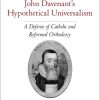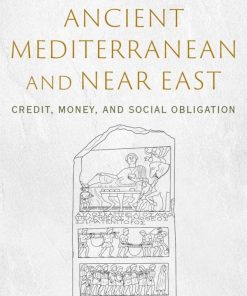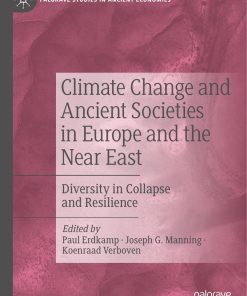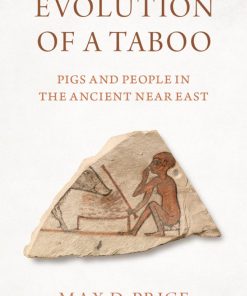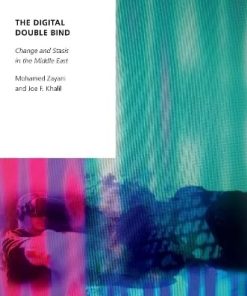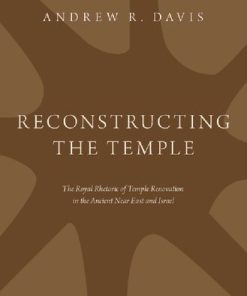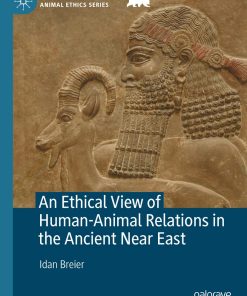Female Power and Religious Change in the Medieval Near East 1st edition by Uriel Simonsohn 0192699121 9780192699121
$50.00 Original price was: $50.00.$25.00Current price is: $25.00.
Female Power and Religious Change in the Medieval Near East 1st edition by Uriel Simonsohn – Ebook PDF Instant Download/DeliveryISBN: 0192699121, 9780192699121
Full download Female Power and Religious Change in the Medieval Near East 1st edition after payment.
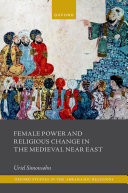
Product details:
ISBN-10 : 0192699121
ISBN-13 : 9780192699121
Author: Uriel Simonsohn
Female Power and Religious Change in the Medieval Near East engages with two levels of scholarly discussion that are all too often dealt with separately in modern scholarship: the Islamization of the Near East and the place of women in pre-modern Near Eastern societies. It outlines how these two lines of inquiry can and should be read in an integrative manner. Major historical themes such as conversion to Islam, Islamization, religious violence, and the regulation of Muslim/non-Muslim ties are addressed and reframed by attending to the relatively hidden, yet highly meaningful, role that women played throughout this period. This book is about the history of Islam from the perspective of female social agents. It argues that irrespective of their religious affiliation, women possessed crucial means for affecting or hindering religious changes, not only in the form of religious conversion, but also in the adoption of practices and the delineation of communal boundaries. Its focus on the role and significance of female power in moments of religious change within family households offers a historical angle that has hitherto been relatively absent from modern scholarship. Rather than locating signs of female autonomy or authority in the political, intellectual, religious, or economic spheres, Female Power and Religious Change in the Medieval Near East is concerned with the capacity of women to affect religious communal affiliations thanks to their kinship ties.
Female Power and Religious Change in the Medieval Near East 1st Table of contents:
1. Contours of Family Dynamics
The problem of definition
Structures, norms, and values
Women within the family
Female agency within the family
Conclusions
2. “Even though it be against yourselves, or your parents and kinsmen” (Q 4:135): The Prioritization of God over Family
Community vs. kinship
Kinship ties and the formation of religious communities
Ideals of family breakups
Choosing between God and kin—the proselytizing utility of kinship ties
Kinship manipulations of religious agendas
Women between kinship and community
Conclusions
3. Religiously Mixed Families as Sites of Competing Religious Traditions
An overview of social circumstances
Restriction and regulation
Conclusions
4. “No bearer of burdens will bear the burden of another” (Q 53: 38): The Liminal Position of Women in Religiously Mixed Families
The potential effects of enduring kinship ties—the story of Ṣafiyya bt. Ḥuyayy b. Akhṭab
The liminal position of non-Muslim women
Muslim perceptions of non-Muslim female agency
Aspects of non-Muslim female agency
Syncretic consequences
Conclusion
5. Female Conversion to Islam: Religious Defiance and Feminine Resistance
Late antique prototypes
Female conversion to Islam in biographic narratives
The question of female conversion to Islam
Narrative depictions of female torments following conversion
The proselytizing agency of female converts
Zaynab bt. Muhammad
Umm Ḥakīm
Conclusions
6. Precarious Gatekeepers: Female Power and Religious Conflict
A precarious state
The enduring identity of Jewish women
Christian women as guardians of faith and community
Islamic topoi of strong Muslim women
The story of the mother and seven sons
People also search for Female Power and Religious Change in the Medieval Near East 1st:
religious power and control wheel
religious power
female empowerment in the church
female religious leaders
power and religion
Tags: Female Power, Religious Change, the Medieval Near East, Uriel Simonsohn
You may also like…
Uncategorized
Politics & Philosophy - Anthropology
History - Archaeology
Evolution of a Taboo: Pigs and People in the Ancient Near East 1st Edition
Politics & Philosophy - Politics
The Digital Double Bind: Change and Stasis in the Middle East Mohamed Zayani
History History - Ancient History


